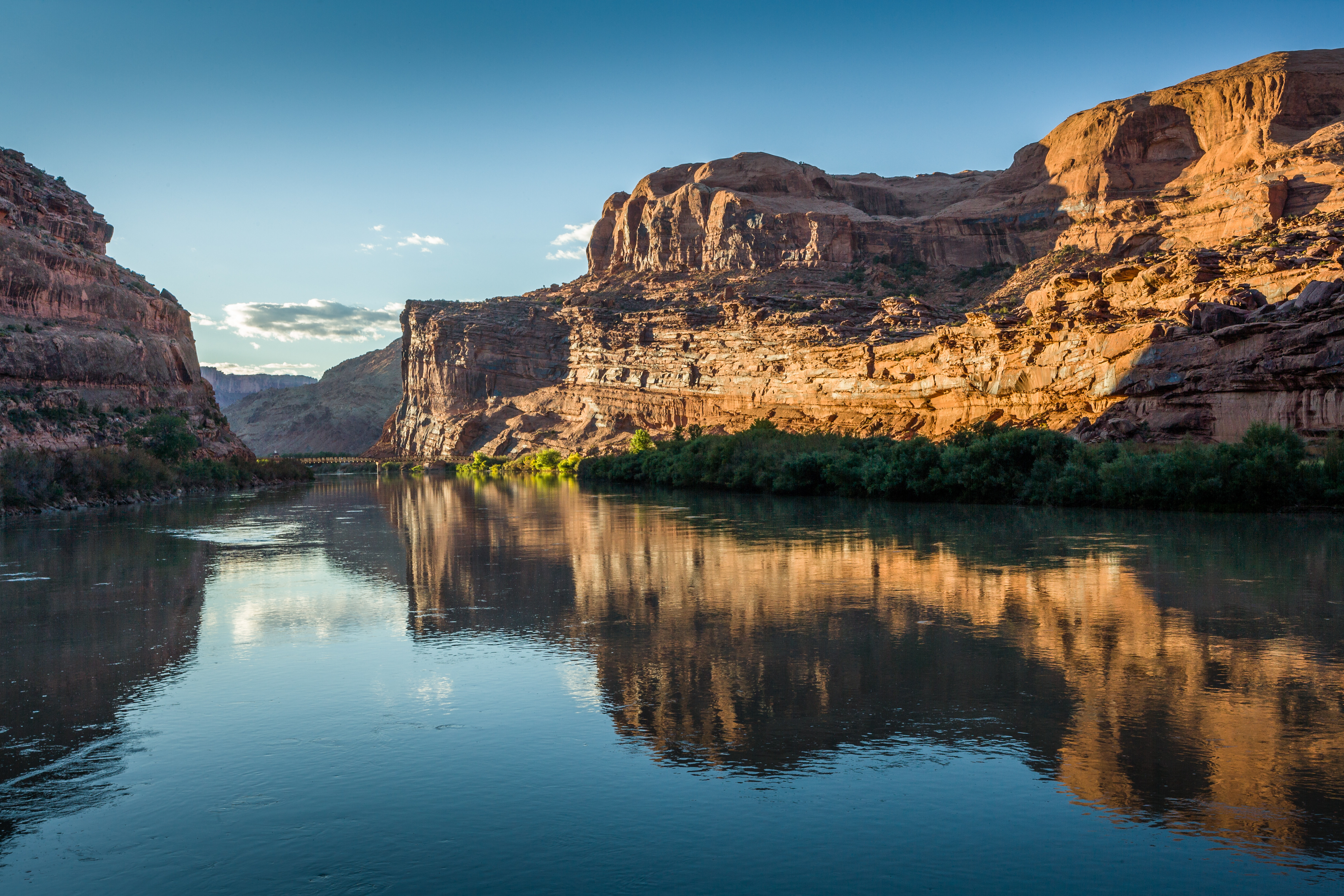Can more water be stored in Bear Lake by adjusting flood control operations? Idaho, Utah and PacifiCorp worked with reservoir modeling experts at the University of Colorado to answer this question. The technical report “Impacts on Bear Lake Storage under Alternative High-Runoff Management Operations” published today, summarizes findings about how different flood control operations can raise lake levels and increase storage.
(more…)Conservation critical to meet Utah’s water needs
Published 10-22-20
Conservation is critical to meet the water needs of Utah’s growing population and is a factor that can significantly postpone water development projects.
“We’ve seen how implementing water conservation strategies can delay large-scale infrastructure projects,” said Todd Adams, director of the Utah Division of Water Resources. “When the Legislature passed the Bear River Development Act in 1991, the projected need for the water was in 2015. Thanks primarily to conservation efforts, new technology and some smaller water development projects, current projections indicate the water won’t be needed until 2045 to 2050.”
(more…)Extension requested on Lake Powell Pipeline timeline
Published 09-24-20
The Utah Division of Water Resources and Washington County Water Conservancy District have requested an extended timeline from the Bureau of Reclamation (Reclamation) to consider comments received on the Lake Powell Pipeline’s draft Environmental Impact Statement (EIS) from the public, tribes, non-government organizations and fellow Colorado River Basin states.
“The Lake Powell Pipeline is a critical water infrastructure project for Utah,” said Todd Adams, director, Utah Division of Water Resources. “The extension will allow more time to consider the comments and complete further analysis, which will contribute to a more comprehensive draft and final EIS.”
(more…)Response to Basin States’ Lake Powell Pipeline letter
Published 09-09-20
The Sept. 8 conclusion of the public comment period for the Lake Powell Pipeline draft Environmental Impact Statement is another significant project milestone. We’re pleased to know the other Colorado River Basin States are committed to working toward solutions in good faith.
Comments from the other basin states were expected and are part of a comprehensive process. There are numerous water projects in the West that have worked through unresolved issues while under federal review. As basin states, we have a history of solving complex challenges, and we will do so now.
The State of Utah remains committed to working with the other basin states to mitigate their concerns raised by our intent to use a portion of Utah’s Colorado River allocation to provide water to Washington County. We will work diligently to address their concerns over the coming months.
The current NEPA process is the culmination of 20 years of study and planning. The project would use 5% of Utah’s Colorado River compact allocation and is critical to meeting the needs of southern Utah by enhancing the reliability of Washington County’s water system. Without the project, the economic viability and water security of one of the fastest-growing regions in the United States will be harmed. – Utah Division of Water Resources Director Todd Adams
Lake Powell Pipeline Cost Estimate Included in Draft EIS
Published 06-16-20
Cost estimates for the Lake Powell Pipeline’s construction; interest during construction; present value of annual operation, maintenance, replacement and power; and estimated total project costs are reported in table 3.20-9 on page 242 of the draft Environmental Impact Statement published on Monday, June 8, 2020. Costs are comparable to prior estimates.

Lake Powell Pipeline Draft EIS Issued
Published 06-09-20
St. George, UT – After decades of study, the Lake Powell Pipeline has reached a critical milestone – the Bureau of Reclamation has issued the draft Environmental Impact Statement (EIS) and opened a public comment period. The Southern Alternative has been named the “preferred alternative.” (more…)
Weekly Lawn Watering Guide targets water needs in each county
Published 04-30-20
Is it time to turn the sprinklers on? Check the Utah Division of Water Resources’ Weekly Lawn Watering Guide and find out. The guide is posted every Friday on the division’s Facebook page and website during the irrigation season to help Utahns target water needs in each county. (more…)
Utah teams up with federal, state and water agencies to assess the state of the Colorado River
Published 04-09-20
As one of the seven states that make up the Colorado River Basin, Utah takes an active interest in this critically important river that provides water to 40 million people and 5 million acres of farmland. For the past three years, the Utah Division of Water Resources has partnered with the other basin states to form a workgroup to support climate and hydrology studies and centralize them to help guide management and planning efforts for the Colorado River. (more…)
2020 Water for Utah
Published 02-10-20
The Water For Utah overview provides a quick snapshot of the work the Division of Water Resources is doing to “plan, conserve, develop and protect” Utah’s water, as well as the role the Board of Water Resources plays. This information was presented to the Utah Legislature on Feb. 10. Over the past 70 years, the Board has provided financial assistance to over 1,485 private water companies, irrigation companies, municipalities and water districts.
Director of Utah Division of Water Resources Appointed
Published 12-17-19
Todd D. Adams has been appointed to head the Utah Division of Water Resources. Department of Natural Resources Executive Director Brian Steed selected Adams to replace Eric Millis who retired after nearly 32 years with the division, six of those as the director.
Adams started his career with the division in 1990 after graduating from Utah State University with both a bachelor’s degree and a master’s degree in civil engineering. He has served as the division’s deputy director since 2013. Before being promoted to deputy director, he was the assistant director since 2006. (more…)









